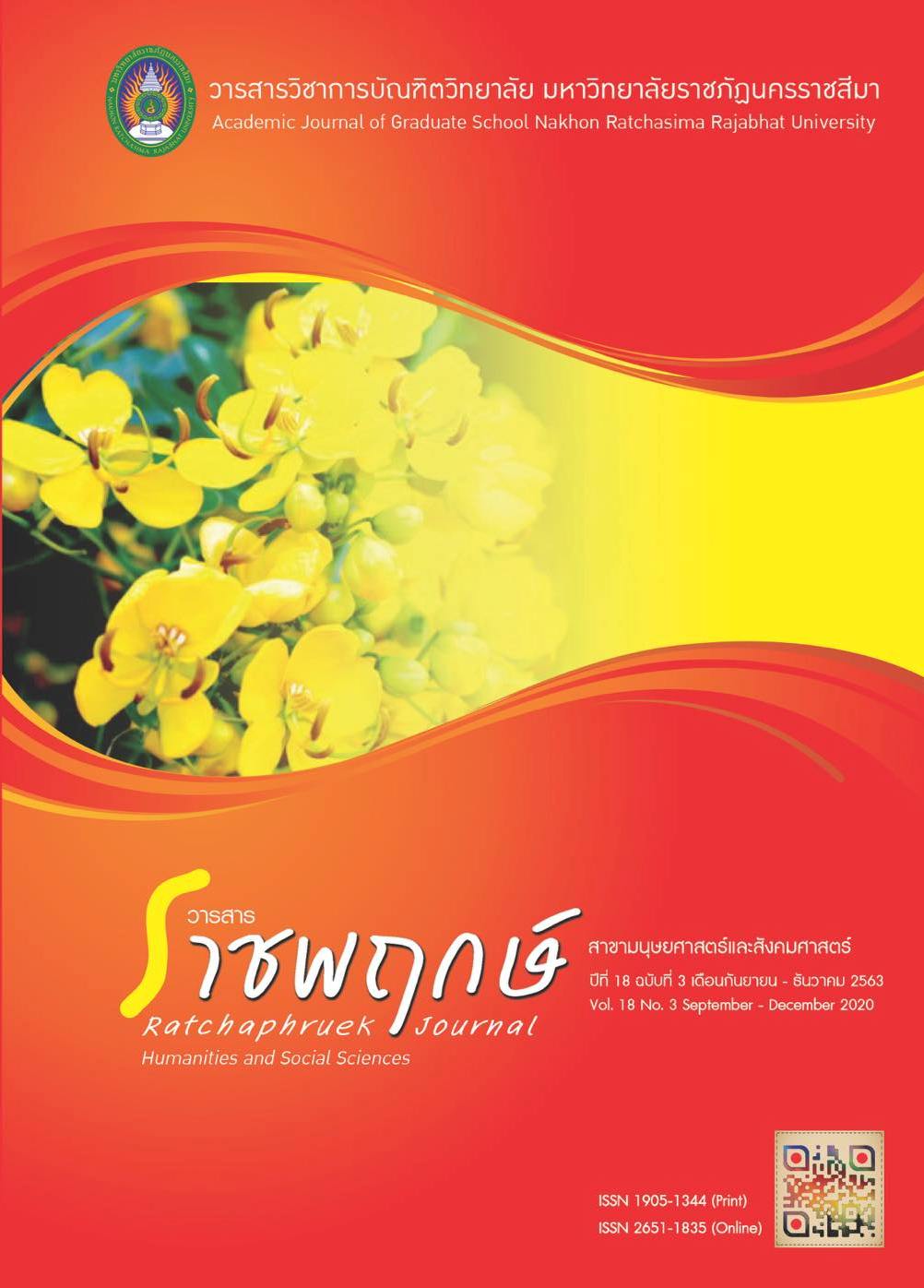Effects of Using Storyline Method on English Reading Comprehension Skills of 12th Grade Students
Main Article Content
Abstract
The research objectives were to study 1) English reading comprehension skills after using Storyline Method of 12th grade students and 2) the students’ opinions toward English Reading Comprehension using Storyline Method. The population was 226 students of Khoksamrong Wittaya School. The sample was 24 students of Khoksamrong Wittaya School in the 1st semester of the academic year 2019. The sample was selected by simple random sampling. The students studied 4 lessons using Storyline Method to develop English reading comprehension skills. The instruments in the study consisted of 4 Storyline lesson plans, English reading comprehension skills test, a questionnaire about students’ opinions toward Storyline method on English Reading Comprehension and a survey form of students’ need on reading texts. The data were analyzed by mean (), standard deviation (S.D.), and t-test (Dependent). The findings of the study revealed that 1) students’ English reading comprehension skills after using Storyline Method were significantly higher than before using Storyline Method at the significant level of .05, and 2) the students’ opinions toward Storyline Method on English reading comprehension skills were at the high level.
Article Details
References
สถาบันส่งเสริมการสอนวิทยาศาสตร์และเทคโนโลยี. (2562). ผลการประเมิน PISA 2018 : บทสรุปสาหรับผู้บริหาร. สืบค้นเมื่อ 3 เมษายน 2563
จาก https://pisathailand.ipst.ac.th/pisa2018-summary-result/
Anderson, N. J. (2003). Reading. In Nunan, D. (Ed.), Practical English Language teaching. Singapore: McGrew-Hill companies, Inc.
Ahlquist, S. (2011). The Impact of The Storyline Approach on Young Language Learner Classroom : A Case Study in Sweden (Doctor of Education). Department of English Kristiantad University.
Bell, S. & Harkness, S. (2013). Storyline – Promoting Language Across the Curriculum. Leicester: The United Kingdom Literacy Association.
Chomchaiya, C. & Dunworth, K. (2008). Identification of Learning barriers affecting English reading comprehension instruction, as perceived by ESL
Undergraduates in Thailand. EDU-COM International Conference, 1(1), 97-104.
Creswell, J. (1997). Creating worlds, constructing meaning: the Scottish Storyline Method. Portsmouth: Heinemann.
Ellis, G. & Brewster, J. (2014). Tell it Again! The Storytelling Handbook for Primary English Language Teachers. London: British Council.
Foley, J. (2005). English in Thailand. RELC Journal, 36(2), 223-234.
Hayes, B. (1991). Effective Strategies For Teaching Reading. Boston: Allyn & Bacon.
Kocher, D. (2007). Why Storyline Is a Powerful Tool in the Foreign Language
Classroom. In Bell, S. & Harkness, S. (Ed.), Storyline Past, Present and Future (pp.122-125). Glasgow: University of Strathclyde Press.
Mitchell, P. J. (2013). The Storyline method in foreign language teaching: the history and main principles. Language and Culture, 2(22), 101-109.
Mitchell, P. J. and McNaughton, M. J. (2016). Storyline: A Creative Approach to Learning and Teaching. United Kingdom: Cambridge Scholars Publishing.
Nuttall, C. (2007). Teaching reading skills in a foreign language. Oxford: Macmillan Education.
Renandya, W. A. & Widodo, H. P. (2016). English Language Teaching Today. New South Wales: Springer International Publishing.
Solstad A. G. (2009). Storyline – A Strategy for Active Learning and Adapted Education. HBO-report, 2,1-15.
Walker, B. J. (2004). Diagnostic teaching of reading : techniques for instruction and Assessment. New Jersey: Pearson Education, Inc.
Yopp, H. K., & Yopp, R. H. (1996). Literature-based reading activities. Boston: Allyn & Bacon.


